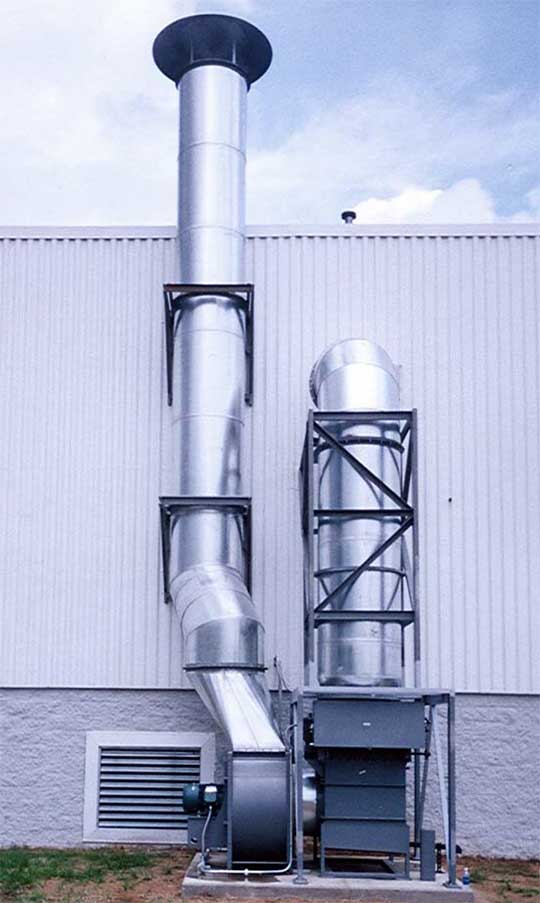
Background
A global supplier of textiles for automotive interiors has a plant in the U.S. that produces fabric for major auto companies. The manufacturing process includes coating and processing large sheets of fabric in tenter frames.
The plant had emissions of oil mist, fine particulate, and volatile organic compounds (VOCs) in the exhaust from the tenter frames. The oil mist particles are primarily in the sub-micron range.
Objective
Emission controls were required for compliance with state EPA regulations for opacity (visible emissions). The plant’s objective was to identify a proven, reliable, low cost and low maintenance solution to eliminate the fine particulate and VOC emissions.
Alternatives
The plant’s alternatives included the following control technologies:
The last option, the UHF® system, is an indexing-bed filter system that uses proprietary technology to achieve very high control efficiency in a compact design with low energy requirements.
Comparison of Alternatives
A Model 506 UHF® system for 16,000 ACFM was chosen by the plant, as it offered a control efficiency of 99%, a very low pressure drop (i.e., low energy costs), simplicity of operation and extremely low maintenance, and no downtime required for filter replacement as it could be done while the system and process are running.
The venturi scrubber presented multiple problems as the company had already experienced, mainly very low control efficiency (i.e., approximately 70%) on the primarily submicron mist droplets (or conversely requiring a pressure drop on the order of 40”+ w.g. to effectively control submicron sizes, i.e., extremely high energy costs), and also results in a water treatment/disposal issue.
The thermal oxidation system was eliminated because it was the most capital intensive and also had very high operating cost, in form of natural gas, compared to the UHF® unit. In terms of capital cost, the UHF® filter system was lowest cost. With the lowest operating and maintenance costs, the UHF® system had the lowest total life cycle cost of all technologies considered by a substantial margin.
Decision and Result
A Model 506 UHF® system for 16,000 ACFM was installed at the plant. The UHF® system meets and exceeds the criteria for performance efficiency and cost-effective solution for the tenter frame emissions. The stack has zero opacity, and the system meets all EPA requirements. The UHF® system provides a further air emissions benefit for the plant by reducing emissions of VOCs.